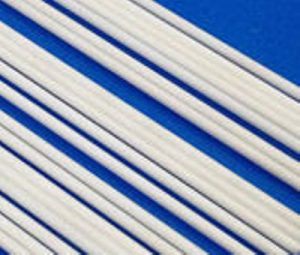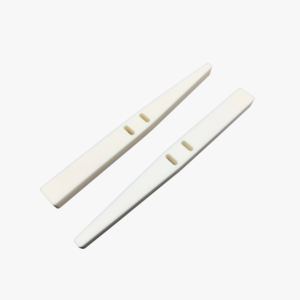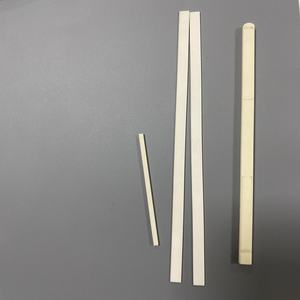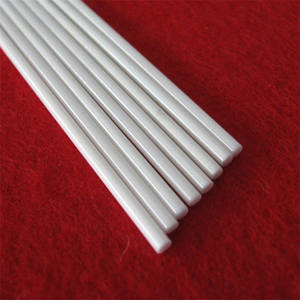Professional industry ceramic supplier, silicon nitride, silicon carbide, aluminum nitride and any other kinds of ceramics.
PRODUCT PARAMETERS
Description
Overview of High Performance Alumina 92% 95% Ceramic Lining Tiles Aluminum Oxide Ceramic Wear Liner
High Performance Alumina 92% 95% Ceramic Lining Tiles Aluminum Oxide Ceramic Wear Liner are one of the most widely used and versatile technical ceramics, prized for their excellent combination of properties. Composed primarily of aluminum oxide (Al₂O₃), they offer outstanding hardness, wear resistance, and electrical insulation, even at high temperatures. From low-purity grades for general industrial use to high-purity compositions for demanding applications, alumina ceramics provide a cost-effective and reliable solution across a vast range of industries.
Features of High Performance Alumina 92% 95% Ceramic Lining Tiles Aluminum Oxide Ceramic Wear Liner
-
High Hardness & Wear Resistance: Excellent resistance to abrasive wear, making it ideal for liners, nozzles, and guides.
-
Superior Electrical Insulation: Maintains high electrical resistivity and dielectric strength, even at elevated temperatures.
-
Excellent Thermal Stability: Withstands high operating temperatures and exhibits good thermal conductivity.
-
High Mechanical Strength: Possesses good compressive strength and stiffness.
-
Chemical Inertness: Resists corrosion from a wide range of acids, alkalis, and other harsh chemicals.
-
Cost-Effectiveness: A highly versatile and economically efficient ceramic material for numerous applications.
Specification of High Performance Alumina 92% 95% Ceramic Lining Tiles Aluminum Oxide Ceramic Wear Liner
High efficiency alumina ceramic lining tiles give excellent wear security. They are made from light weight aluminum oxide. Common compositions are 92% and 95% alumina. These percentages show the purity level. Higher pureness typically implies much better performance. The ceramic tiles are exceptionally hard. They withstand abrasion effectively. This makes them perfect for challenging environments. Industries use them where wear is a large trouble. They secure surface areas from getting broken promptly. These ceramic tiles are discharged at high temperatures. This process makes them very thick. High density contributes to their stamina. The ceramic tiles can take care of impact too. They don’t crack quickly under heavy tons. Their low weight is another advantage. Mounting them is simpler than heavy steel plates. You can attach the tiles to steel support plates. Bolts or special adhesives hold them in place. This develops a solid ceramic-steel compound. The composite lining lasts much longer than steel alone. It reduces maintenance costs significantly. Operations see much less downtime for repair work. Different sizes and shapes are offered. You can find square tiles, rectangle-shaped floor tiles, and hex ceramic tiles. Hex ceramic tiles provide good insurance coverage on bent surfaces. The density differs depending on the application. Thicker tiles manage more serious wear. These linings work well in chutes, receptacles, and conveyor systems. They safeguard areas where materials slide or loss. Pipes and cyclones additionally gain from ceramic linings. Mining, power plants, and concrete plants utilize them extensively. They withstand continuous material flow. Chemical resistance is another key attribute. The tiles don’t respond with most compounds. Temperature modifications don’t impact them much. They execute dependably in warm or cold conditions. Making use of alumina ceramic linings is a clever choice. They expand the life of industrial equipment.
Applications of High Performance Alumina 92% 95% Ceramic Lining Tiles Aluminum Oxide Ceramic Wear Liner
High efficiency alumina ceramic lining floor tiles shield surfaces from extreme wear. These ceramic tiles have either 92% or 95% light weight aluminum oxide. This makes them extremely hard. Their solidity is close to rubies. They stand up to abrasion much better than steel. This expands equipment life significantly. Industries handling rough products make use of these floor tiles extensively. Mining procedures benefit greatly. Conveyor systems face consistent wear from rocks and ore. Ceramic liners protect chutes, hoppers, and transfer points. They drastically lower maintenance downtime.
Nuclear power plant utilize them in coal handling systems. Coal chutes and bunkers break quickly. Alumina ceramic tiles hold up against the constant circulation. Cement manufacturing depends on these liners as well. Resources like sedimentary rock are harsh on devices. Liners shield crucial areas in crushers and mills. Steel factory use them. They line slag pots and troughs carrying molten materials. The ceramic takes care of high temperatures well. It additionally withstands chemical rust.
The 95% alumina quality offers remarkable efficiency. It’s more difficult and extra put on immune than the 92% version. Both kinds are chemically inert. They will not respond with many acids or antacid. This prevents deterioration problems. These floor tiles are likewise very light. Their weight is much less than half that of steel. This relieves installation and decreases architectural tons. They bond strongly to steel support plates making use of unique adhesive. This creates a difficult composite structure. The bond holds also under heavy impact.
Different shapes like squares, rectangular shapes, and hexagons are readily available. Hex ceramic tiles supply very little spaces. This provides near seamless protection. They match bent surface areas better. Square ceramic tiles are easy to install. They function well for flat locations. Custom forms fix special problems. These ceramic floor tiles manage fast temperature changes. They stand up to thermal shock efficiently. This is important in warm handling settings. They maintain performance over long periods. Their durability conserves substitute costs. They are a cost-efficient remedy versus wear.
Company Profile
Tanki New Materials Co.Ltd. focus on the research and development, production and sales of ceramic products, serving the electronics, ceramics, chemical and other industries. Since its establishment in 2015, the company has been committed to providing customers with the best products and services, and has become a leader in the industry through continuous technological innovation and strict quality management.
Our products includes but not limited to Aerogel, Aluminum Nitride, Aluminum Oxide, Boron Carbide, Boron Nitride, Ceramic Crucible, Ceramic Fiber, Quartz Product, Refractory Material, Silicon Carbide, Silicon Nitride, ect. please feel free to contact us.

Payment Methods
T/T, Western Union, Paypal, Credit Card etc.
Shipment Methods
By air, by sea, by express, as customers request.
5 FAQs of High Performance Alumina 92% 95% Ceramic Lining Tiles Aluminum Oxide Ceramic Wear Liner
What are alumina ceramic lining tiles?
These are high-performance ceramic tiles made mostly from aluminum oxide. People use them to protect surfaces from wear and tear. The 92% and 95% numbers show how much pure alumina they contain. Higher alumina usually means better performance.
Where are these tiles typically used?
You find these tiles in industries where equipment faces lots of abrasion or impact. They line chutes, hoppers, pipes, and cyclones in mining, power plants, and cement factories. They shield the steel underneath from getting worn down quickly.
Why choose alumina ceramic over other wear liners?
Alumina ceramic lasts much longer than steel or rubber in harsh conditions. It resists abrasion extremely well. This means less downtime for maintenance and lower replacement costs over time. The tiles handle high impacts too.
How are these ceramic tiles installed?
Workers attach the tiles directly onto the steel surface using special epoxy or rubber compounds. They often arrange them in patterns to cover the area completely. Some systems use bolts or special clips for a very secure hold. Proper installation is key for good performance.
What makes these tiles so durable?
The high alumina content creates a very hard, dense material. Its molecular structure resists scratching and chipping far better than softer metals. This hardness is why they offer superior protection against abrasive materials sliding or impacting them.
REQUEST A QUOTE
RELATED PRODUCTS

Custom Made High Purity Aluminum Oxide Ceramic Cover

Alumina Ceramic Parts Aluminum Oxide Chemical Stability Ceramic Shaft for High Speed Pump

0.8*6mm 99.6% Al2O3 Aluminum Oxide Alumina Ceramic Pin

High Purity Aluminum Oxide Alumina Small Diameter Ceramic Tube

Round 96 99.6 Aluminum Oxide Substrate Alumina Al2O3 Ceramic Wafer



